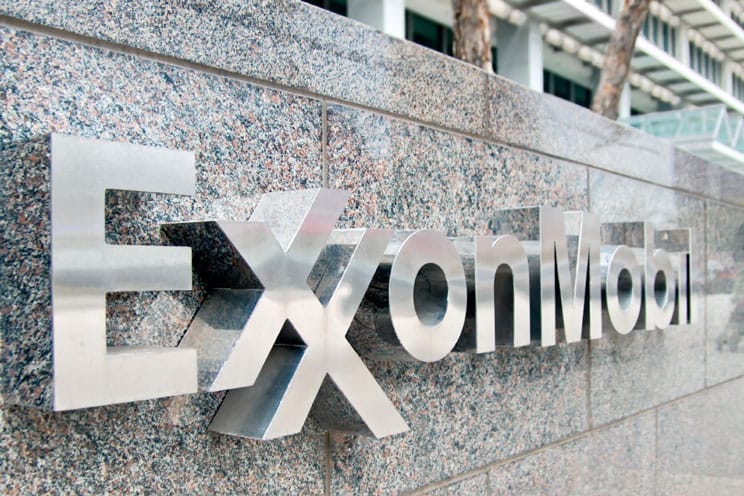ExxonMobil, BASF Advance Methane Pyrolysis to Scale Low Emission Hydrogen Production

• ExxonMobil and BASF will build a demonstration plant in Baytown, Texas, designed to produce 2,000 tons of low-emission hydrogen annually.
• Methane pyrolysis offers a high-efficiency, low-emission alternative in regions where carbon capture and storage is constrained by geology, cost or policy.
• Solid carbon output creates new industrial supply opportunities across metals, construction and battery materials.
A new phase in the push for industrial hydrogen
ExxonMobil and BASF have launched a joint development effort aimed at bringing methane pyrolysis to commercial scale, positioning the technology as a competitive route for low-emission hydrogen in regions where carbon capture remains difficult or politically contentious. The companies have signed a development agreement covering process integration, demonstration operations and scale-up planning, with a new pilot facility planned at ExxonMobil’s Baytown complex on the Texas Gulf Coast.
The partnership brings together two of the sector’s largest players at a time when industrial hydrogen demand is rising, and regulatory pressure on emissions is intensifying across Europe, the United States and parts of Asia. The collaboration gives both companies a pathway to diversify their hydrogen strategies beyond electrolysis and traditional reforming.
A technology race shaped by policy constraints
Methane pyrolysis converts natural gas or bio-methane into hydrogen and solid carbon using electricity instead of steam reforming and without generating process CO2. Unlike electrolysis, the approach avoids heavy water use and requires significantly less power. That efficiency profile has drawn attention from policymakers seeking scalable solutions for industrial decarbonization while balancing grid limitations and water scarcity.
“This collaboration combines technological innovations and industrial expertise of ExxonMobil and BASF to accelerate the development of low-emission hydrogen,” said Mike Zamora, president of ExxonMobil Technology and Engineering Company. “Methane pyrolysis holds real potential, especially in regions where traditional carbon capture and storage solutions are less viable. ExxonMobil brings decades of deep technical knowledge in methane pyrolysis and a shared commitment to innovation.”

BASF began developing its own version of the technology more than a decade ago under a program supported by the German Federal Ministry of Research, Technology and Space. The company has since validated its reactor concept at a test plant in Ludwigshafen.
“This novel methane pyrolysis technology generates competitive low-emission hydrogen and has a high potential for further reduction of the carbon footprint of our product portfolio,” said Dr. Stephan Kothrade, member of the Board of Executive Directors and Chief Technology Officer at BASF. “By combining BASF’s process innovation with ExxonMobil’s scale-up expertise we are bringing this cost-efficient low-emission hydrogen solution closer to economically viable industrial deployment.”

Baytown demonstration plant aims to close the commercial gap
The upcoming demonstration unit will be designed to produce roughly 2,000 tons of hydrogen and 6,000 tons of solid carbon per year. While modest in scale compared to full industrial facilities, the plant is large enough to validate thermal behavior, materials performance and power requirements under near-commercial conditions.
By placing the facility at Baytown — one of the largest integrated petrochemical sites in the United States — the partners will be able to test integration with existing natural gas infrastructure and downstream hydrogen applications. That linkage to existing assets is a central argument for methane pyrolysis advocates, who stress that the technology does not require large-scale CO2 transport and injection infrastructure.
Investors and industrial buyers are watching closely, particularly in the Gulf Coast, where methane-based hydrogen could align with both state industrial policy and federal incentives provided under the Inflation Reduction Act.
RELATED ARTICLE: ExxonMobil Moves Forward with Largest Renewable Diesel Facility in Canada
Carbon output becomes a new commercial stream
The separation of methane into hydrogen and solid carbon generates a second product stream with commercial value. Solid carbon can be used in steel and aluminum manufacturing, construction materials and high-purity carbon products used in batteries and specialty applications. Its marketability could improve project economics and reduce waste, making the process more financially attractive compared to CO2-intensive hydrogen routes.
The approach also provides diversification benefits for companies seeking alternatives to carbon capture, which remains challenged by permitting timelines, geologic uncertainty and public opposition in parts of Europe and the United States.
What executives should watch
For industrial buyers, the viability of methane pyrolysis hinges on three factors: electricity price stability, natural gas availability and regulatory treatment of process emissions. Governments evaluating hydrogen procurement rules will have to determine how methane-derived hydrogen fits into emerging low-carbon certification regimes.
For investors, the ExxonMobil-BASF project adds momentum to a small but fast-developing segment of the hydrogen market that sits between fully green electrolysis and carbon-capture-dependent blue hydrogen. The scalability of the Baytown demonstration plant will be a key indicator of cost trajectory.
A global race to define low-emission hydrogen
The collaboration brings another contender into the global hydrogen race as countries pursue different pathways depending on grid capacity, industrial structure and political constraints. Methane pyrolysis offers a route that aligns with existing gas networks and requires fewer new infrastructure commitments. Its potential benefits are drawing attention from policymakers seeking pragmatic, near-term solutions for industrial decarbonization.
As governments refine their hydrogen strategies — from the EU’s delegated acts to the United States’ emerging tax credit guidance — the commercial results from Baytown will shape how methane-derived hydrogen is classified, funded and deployed across regions. The ExxonMobil-BASF collaboration positions the technology firmly within that debate, giving the sector a new benchmark for cost, reliability and deployment potential.
Follow ESG News on LinkedIn











